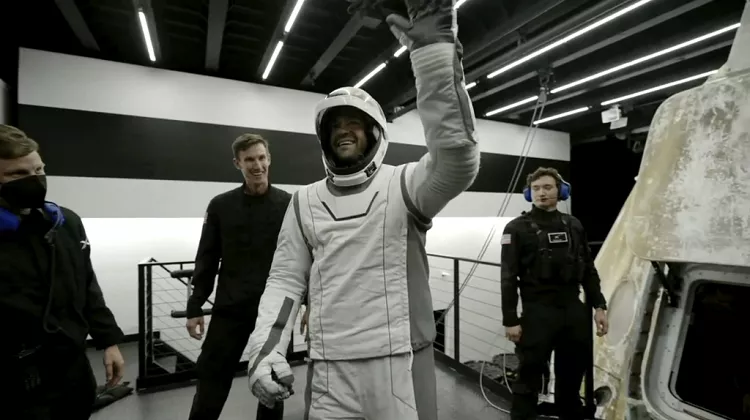Jared Isaacman and his crew returned to Earth on Sunday, concluding a five-day space mission that took them higher than anyone has traveled since NASA’s moon missions.
The SpaceX capsule, carrying the billionaire tech entrepreneur, two SpaceX engineers, and a former Air Force Thunderbird pilot, splashed down in the Gulf of Mexico near the Dry Tortugas in the early morning darkness. During their mission, they achieved the first-ever private spacewalk, orbiting at an altitude of nearly 740 kilometers—higher than both the International Space Station and the Hubble Space Telescope. Their spacecraft reached a peak altitude of 1,408 kilometers after launching on Tuesday.
Isaacman became the 264th person to perform a spacewalk, while SpaceX engineer Sarah Gillis became the 265th, marking the first time non-professional astronauts have completed this feat. “We are mission complete,” Isaacman radioed as their capsule floated in the water, awaiting recovery. Within an hour, all four crew members exited the spacecraft, celebrating with raised fists as they stepped onto the recovery ship.
This was the first time SpaceX targeted a splashdown near the Dry Tortugas, a group of islands located 113 kilometers west of Key West. To commemorate the occasion, SpaceX’s Mission Control team in Hawthorne, California, brought in a green turtle balloon. Typically, SpaceX aims for splashdowns closer to the Florida coast, but poor weather forecasts led to this alternate location.
The brief spacewalk on Thursday lasted less than two hours. The Dragon capsule’s hatch was open for just half an hour, with Isaacman emerging only up to his waist to test SpaceX’s new spacesuit. Gillis followed, standing knee-high in the hatch while flexing her arms and legs. Gillis, a classically trained violinist, also performed a musical piece in orbit earlier in the week. Much of the spacewalk time was spent depressurizing and repressurizing the capsule, and even the two crew members who remained inside, Anna Menon and Scott “Kidd” Poteet, wore spacesuits for safety.
SpaceX views this spacewalk as an early test for spacesuit technology, which could be crucial for future missions to Mars.
This mission, named Polaris Dawn, is part of Isaacman’s Polaris space exploration program, which he personally finances. It marks his second chartered flight with SpaceX, with two more planned. In 2021, Isaacman funded his first spaceflight, taking contest winners and a pediatric cancer survivor into orbit while raising over €240 million for St. Jude Children’s Research Hospital. For Polaris Dawn, Isaacman shared the costs with SpaceX, though he has not disclosed the exact amount.
